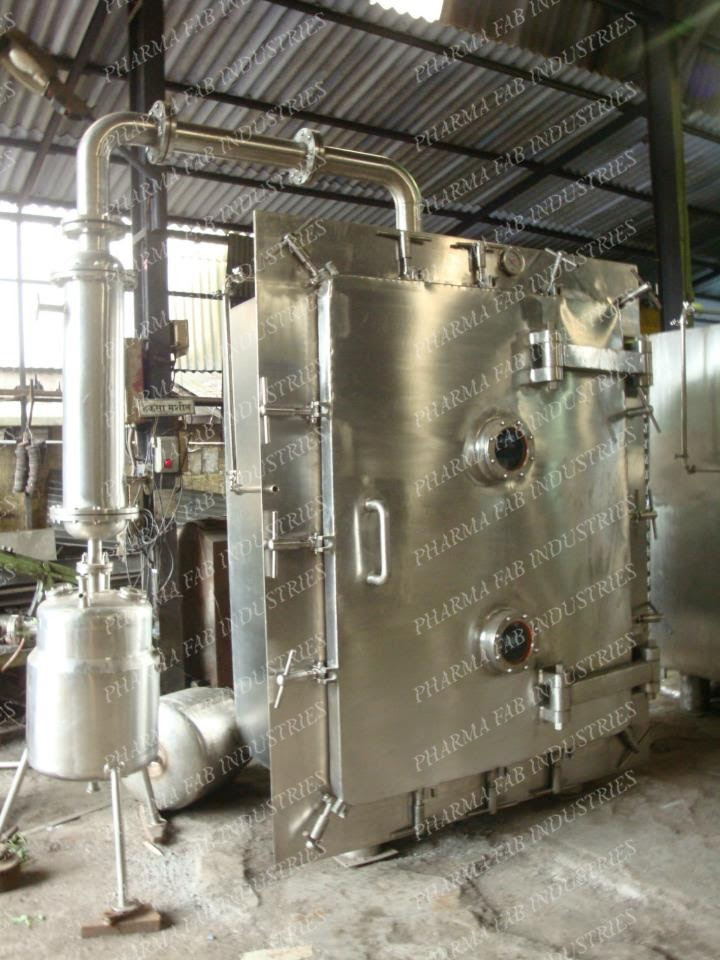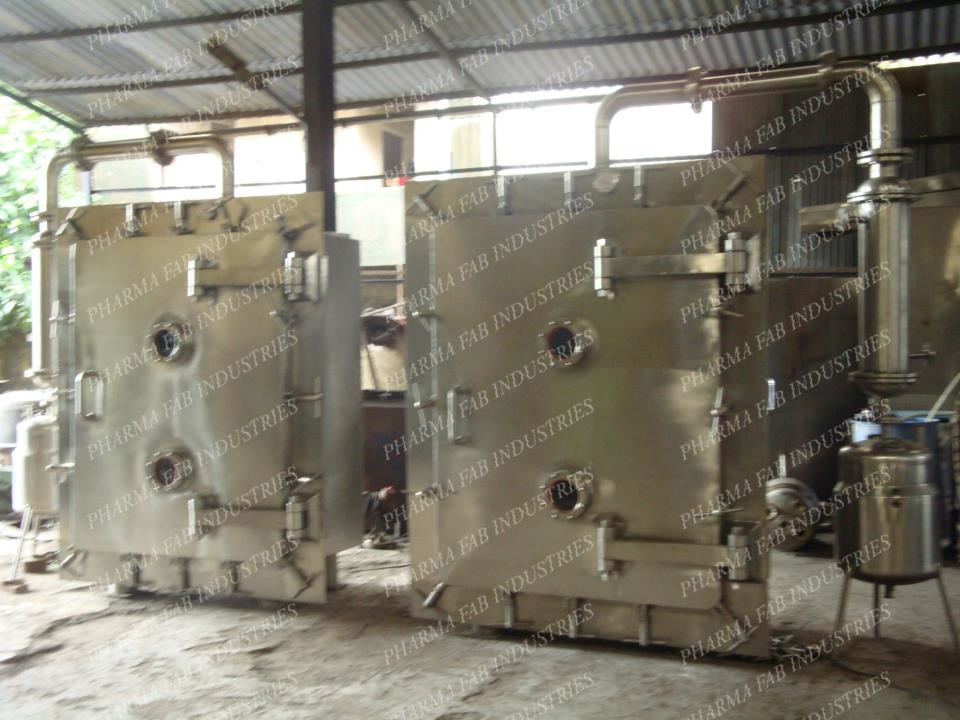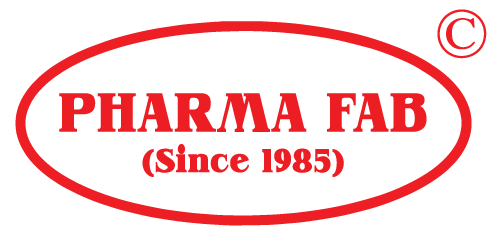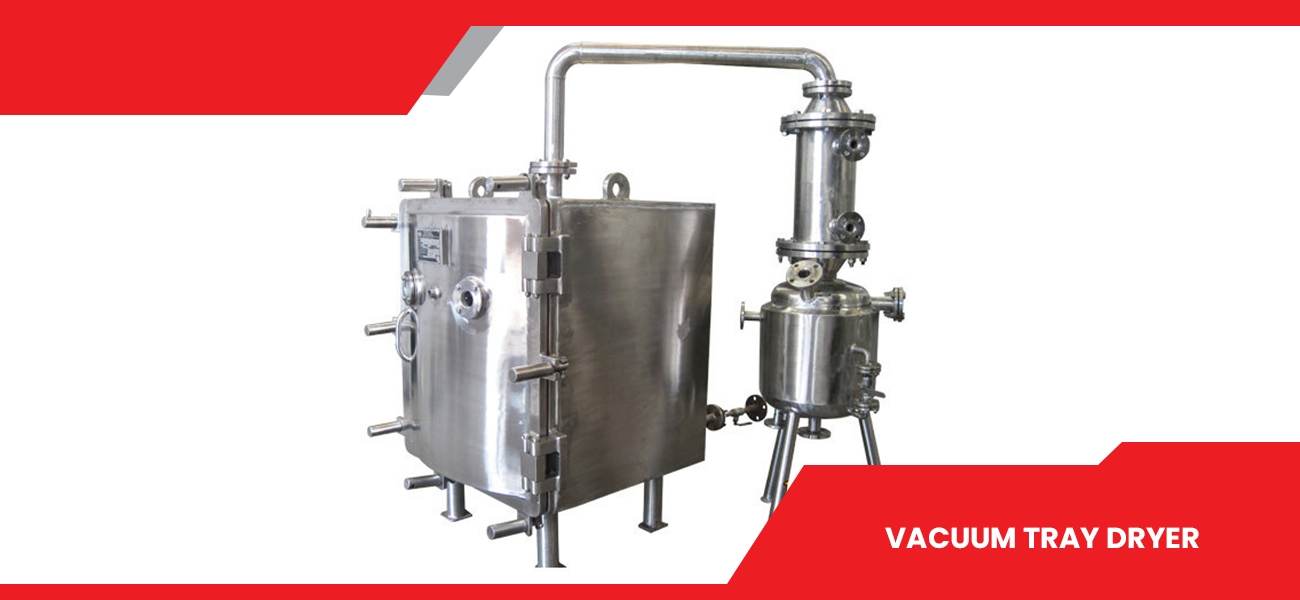
- Home
- Vacuum Tray Dryer
Vacuum Tray Dryer
Application & Process :
“ PHARMA FAB INDUSTRIES “ The Vacuum Shelf Tray Dryers are used to hot and dry material under the state of vacuum is called vacuum drying and where difficulties in drying materials due to high toxic contents, hygroscopic in nature, heat sensitive. It is widely used in the pharmaceutical, Herbal, chemical & foodstuff.
The Vacuum Shelf Dryer is basically a tray dryer working under vacuum conditions. Its use vacuum to pump air and humidity out from the closed heat chamber due to vacuum making the chamber on the vacuum state thus increased drying rate greatly and saved energy. The boiling point of the material to be brought down for drying and the entire system is in closed loops so, no contamination occurs. The evaporation’s evolved during the drying process is cooled down through a connected condenser and collected in receiver. The vacuum shelf dryer when combined with solvent extraction system, ensures that almost all of evaporating vapors is recovered and condensed in to a receiver. Vacuum shelf dryer is closed chamber with heavy structure with air lock doors, Jacketed and insulated body. Inside chamber there are shelves for resting tray. Shelves are manufactured in hollow construction with baffles cum stiffeners, inlet and outlet nozzle. Hot media is passed through the Inlet Header to each shelf, so heat transfer to the surface, which in turn heats up trays placed on the shelves. The hot media flows out from the shelves through the Outlet Header.
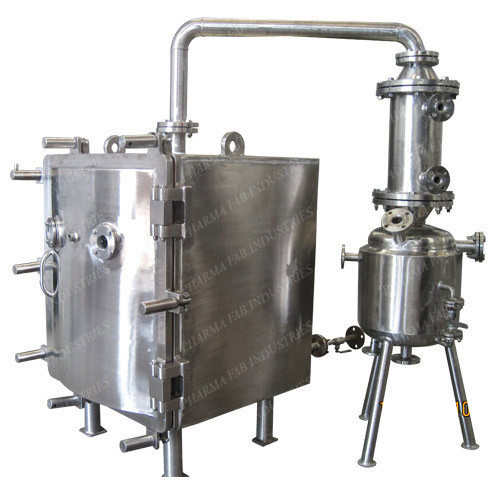
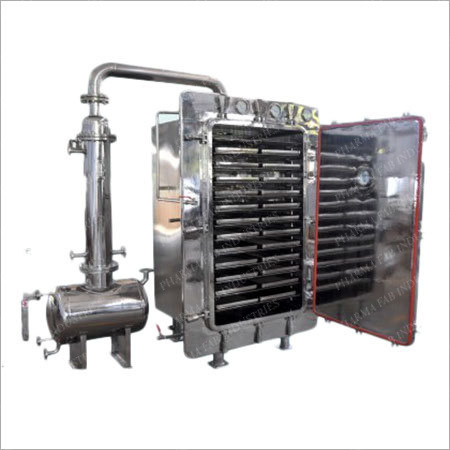
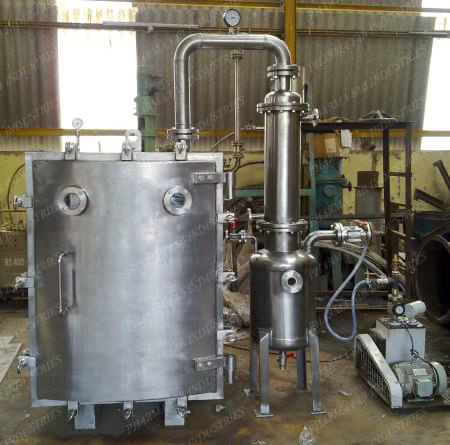
Application & Process :
The Vacuum Shelf Tray Dryers are used to hot and dry material under the state of vacuum is called vacuum drying and where difficulties in drying materials due to high toxic contents, hygroscopic in nature, heat sensitive. It is widely used in the pharmaceutical, Herbal, chemical & foodstuff.
The Vacuum Shelf Dryer is basically a tray dryer working under vacuum conditions. Its use vacuum to pump air and humidity out from the closed heat chamber due to vacuum making the chamber on the vacuum state thus increased drying rate greatly and saved energy. The boiling point of the material to be brought down for drying and the entire system is in closed loops so, no contamination occurs. The evaporation’s evolved during the drying process is cooled down through a connected condenser and collected in receiver. The vacuum shelf dryer when combined with solvent extraction system, ensures that almost all of evaporating vapors is recovered and condensed in to a receiver. Vacuum shelf dryer is closed chamber with heavy structure with air lock doors, Jacketed and insulated body. Inside chamber there are shelves for resting tray. Shelves are manufactured in hollow construction with baffles cum stiffeners, inlet and outlet nozzle. Hot media is passed through the Inlet Header to each shelf, so heat transfer to the surface, which in turn heats up trays placed on the shelves. The hot media flows out from the shelves through the Outlet Header.
Salient Features :
- Design is cGMP with product contact parts AISI 316.
- Vacuumize shelves drying on low temperature system for high toxic. Hygroscopic & heat sensitive materials.
- Vacuumize closed system can be with condenser, Receiver for solvent recovery.
- Very low value of final moisture even at low drying temperatures.
- Safety feature: Vacuum relief valve, Safety pressure relief valve, Temperature Controller & Overload protection.
- Option for heating media can be steam/ hot water / hot tharmic fluid.
- Option features: condenser & Receiver for solvent recovery & Evaporation cooling, PLC Controls, Explosion Proof Electrical
Specifications :
- Vacuum Tray dryer is the most commonly used batch dryer. They are box-shaped and loaded and unloaded via a door. Inside are several heating plates mounted one above the other on which the product is placed in trays.
- The bottoms of both heating plates and trays should be as smooth as possible to permit optimal heat transfer between plates and product.
- The medium flowing through the heating plates is water, steam or thermal oil.
- The distance between the heating plates is determined primarily by the surface loading and the foaming of the product.
- To avoid retrograde condensation the cabinet walls are indirectly preheated by the heating plates. Next, the product is introduced and heated at atmospheric pressure. Only after all individual product trays reach the same temperature the cabinet is evacuated and drying can start.
- The preheating phase is very important in order that the drying curve and the foaming of the product is identical throughout the cabinet.
- During the main drying phase the vacuum is in the range of 40 to 80 mbar abs and in the final drying phase vacuums of only few mbar abs are reached.
- Heating temperatures are normally in the range between 800C and 1100C. Depending on product and surface load, drying takes from a few hours to 1 to 2 days.
- For some products the vacuum and temperature profiles are automatically controlled in order to prevent a pass over of the critical product temperature.
- The dimensioning of the vacuum system is an important factor in the design of drying cabinet systems. If for example vigorous foaming of the product is desired, evacuation to the operational vacuum level must take place very quickly.
- Vapours produced during drying are taken out direct, or via a steam jet compressor to a surface condenser in which the vapours condensate. The non-condensable vapours are extracted by the vacuum system.
- On completion of the drying, the product can be cooled by circulating of cooling water through the heating plates.
- Often vacuum drying cabinets are supplied to new, small production operations in newly opened markets. Following successful development of the market, it could be worthwhile to replace the cabinets through continuous vacuum belt type dryers.
